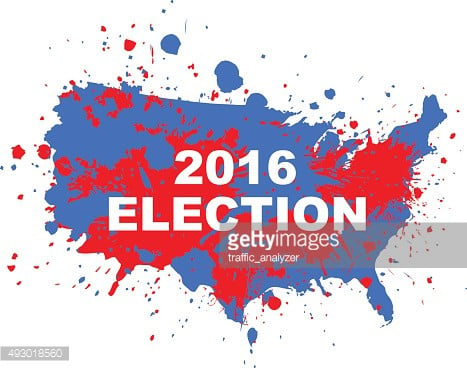Last night ended the debates for the 2016 presidential campaign. Hillary Clinton needed to be presidential. Donald Trump needed a Hail Mary. While both had their best debate, the night did little to change the race’s dynamics.
Trump had a lot riding on this debate. He is down several points in most polls, and by all accounts is set to lose on November 8. And while Trump was more disciplined and prepared than in the first two, even a stellar debate performance would not have been enough to close his gap with Clinton.
Clinton had to maintain her momentum, and she did so. In her strongest debate performance, she aimed “high,” largely eschewing sparring with Trump. While some issues made her efforts at triangulation difficult, most notably gun rights, her gamble is that such positions will help her appeal to voters beyond the Democratic base.
And with that, we have entered the home stretch of the presidential campaign.
***
So what should we look for in these last few weeks?
How will Clinton win?
Assuming that Clinton wins, how will she win? Many Democrats have criticized her for attempting to woo both the Obama coalition and the Clinton Democrats of the 90s. If that strategy works, however, the Democrats may have a playbook that will secure their dominance for some decades. If it fails, however, the party has a lot to think about before 2020 – especially whether they should have taken the Sanders message more seriously.
Will voters move toward third parties?
We can expect so-called “swing voters” to join the electoral momentum, as they usually do. That momentum is for Hillary, especially in view of Trump’s weakness in the primary season with late-deciding voters. Given the deep-seated disillusion with both parties and both candidates, however, might we see the rise of “protest votes” – probably to Clinton’s benefit?
Will Trump cost Republicans the Hill?
Congressional races are never as flashy as the presidential race, and particularly not this year. But the stakes are high, and the races are close. Will the next president be working with a GOP Congress? A Democratic Congress? Or a split Congress? The balance of power between the White House and Capitol Hill has been a defining issue of U.S. politics for decades, and that will be no less true for a Clinton or Trump presidency.1
Whither the “Religious Vote”?
This election cycle has accelerated the demise of much conventional wisdom about religion and U.S. politics: the evangelical political consensus is in tatters, white Catholics are flirting with a Clinton presidency, and the “Religious Right” has been rent by deep divisions, most notably between generations and between leadership and the rank-and-file. Whoever wins this election, future patterns of how religious voters align with political parties could be very different from those we are now used to.
What comes next?
Trump has criticized the legitimacy of the election process in the midst of widespread dissatisfaction with a host of political and social institutions. While this concern is not unheard of in other democracies – note the 2012 Mexican elections, for instance – the phenomenon is new to U.S. politics, even with the contentious outcome of the 2000 election. In light of such developments, the long-term credibility of U.S. democratic institutions may become increasingly fragile.
What unknowns remain unknown?
This has been a surprising campaign cycle. How accurate is polling? Will there be an unpredictable “October surprise”? We’ll be able to answer those questions on November 9.
- The relationship between the two branches is in part based upon the constitutional framework of U.S. government (think of Madison’s “separation of powers” (Federalist 47) and “checks and balances” (Federalist 51)), but also in part upon partisan politics, especially those in play since at least 1994. ↩


